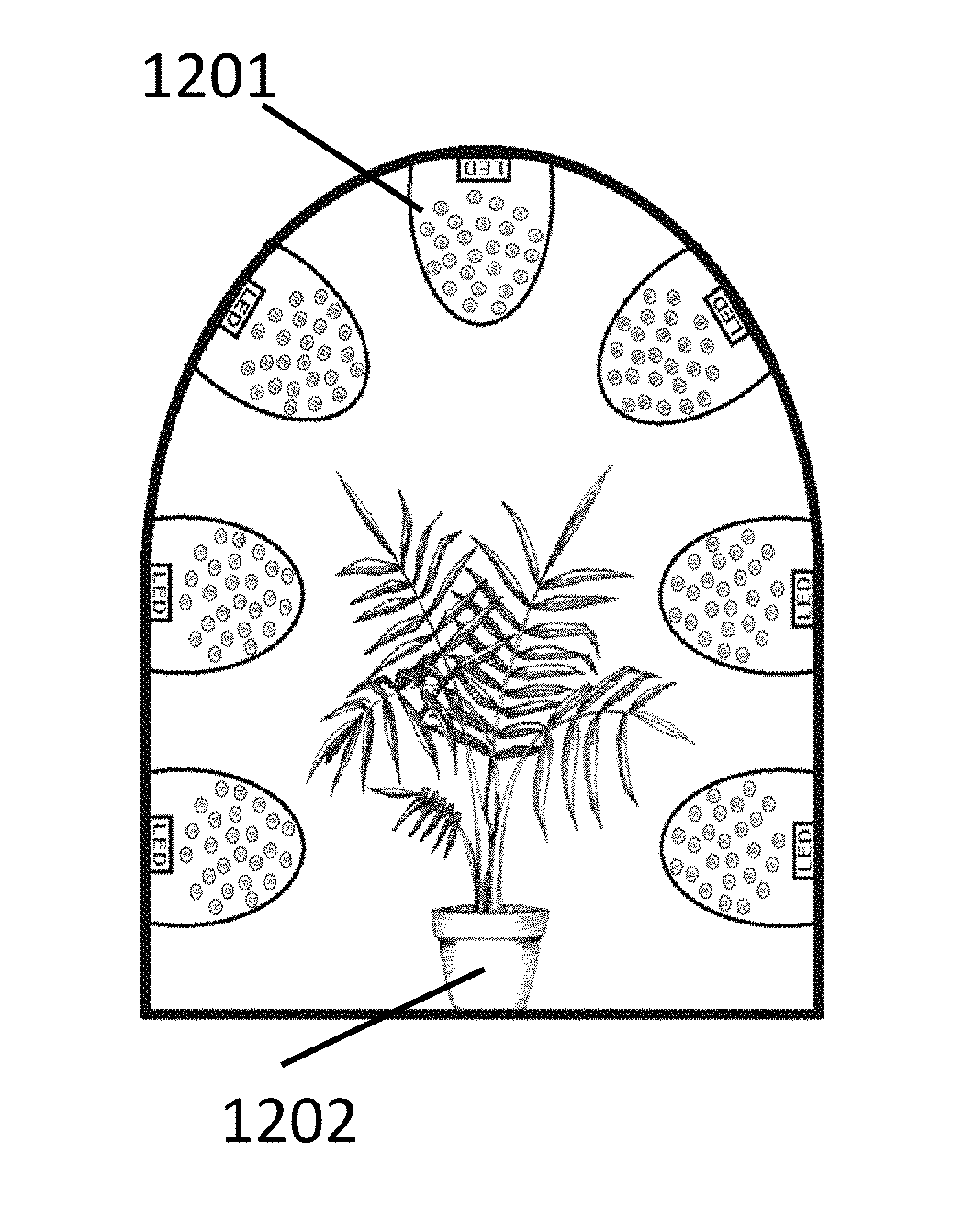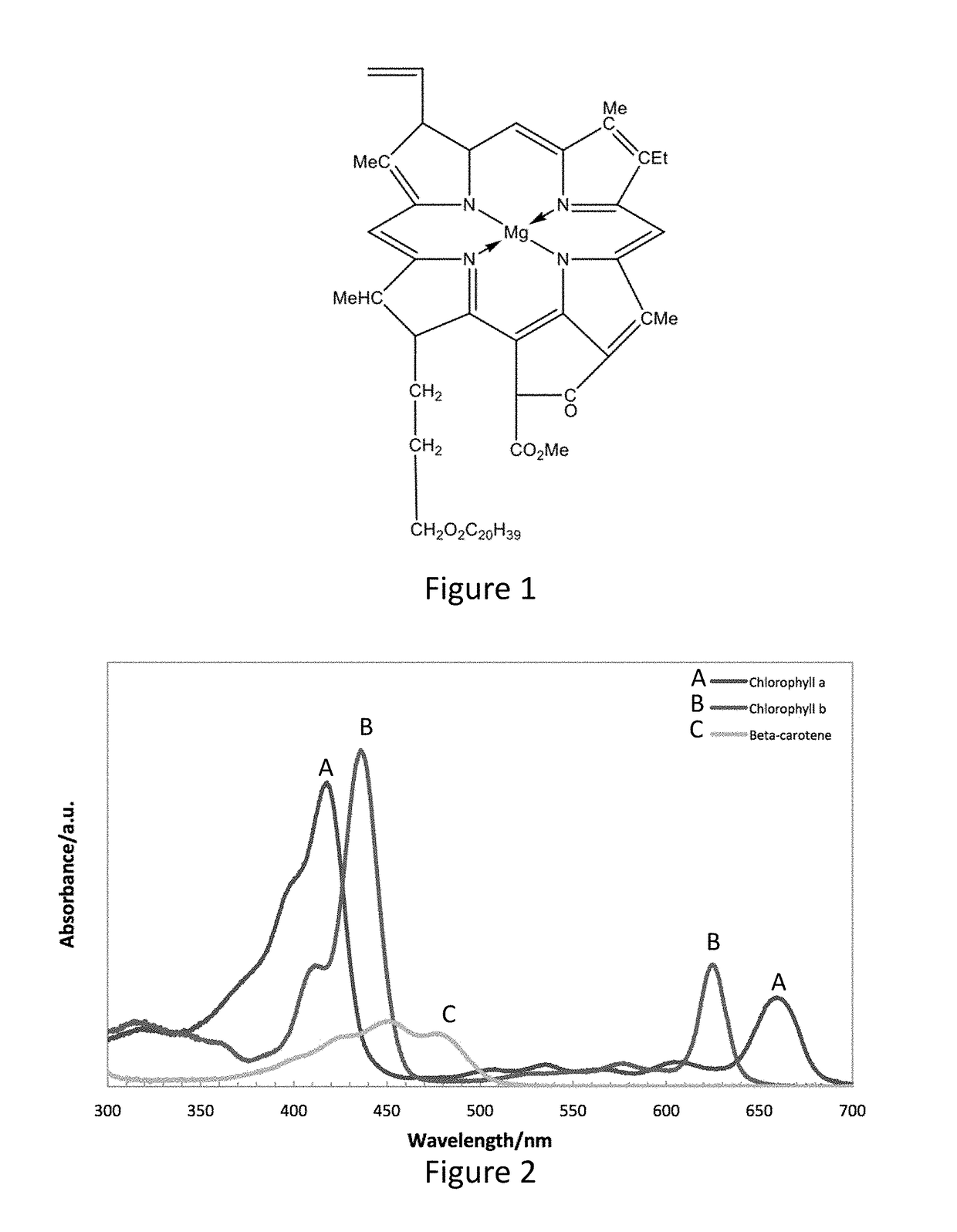Quantum Dot-Containing Composition for Growth Enhancement in Photosynthetic Organisms
a technology of photoluminescence and composition, applied in the field of quantum dot-containing compositions, can solve the problems of increasing the risk of heavy metal exposure at the contamination site, damage to plants or other photosynthetic organisms, etc., and achieves the effects of low cost, high photoluminescence quantum yield and high energy efficiency
- Summary
- Abstract
- Description
- Claims
- Application Information
AI Technical Summary
Benefits of technology
Problems solved by technology
Method used
Image
Examples
Embodiment Construction
[0070]Disclosed is a method of fabricating LEDs optimised for promoting growth of photosynthetic organisms, using a blue or UV solid state LED, with tuned emission using red (and / or other colours, as required, of) quantum dots, to emit light of the correct wavelengths and relative intensities to enhance photosynthesis. QD LEDs may be produced to emit from the blue to the UV region of the electromagnetic spectrum to match the absorption characteristics of chlorophylls and other pigments present in photosynthetic organisms to promote and support their growth.
[0071]Plant factory lighting described in the prior art utilises incandescent, fluorescent or solid state LED lighting, while patented photobioreactors focus little attention on the lighting source. The solid state LEDs described in the prior art are relatively expensive to produce. QD LEDs provide a less expensive alternative, since a very small amount of semiconductor material is required to produce bright, stable emission. The ...
PUM
| Property | Measurement | Unit |
|---|---|---|
| particle size | aaaaa | aaaaa |
| PLQY | aaaaa | aaaaa |
| FWHM | aaaaa | aaaaa |
Abstract
Description
Claims
Application Information
 Login to View More
Login to View More - R&D
- Intellectual Property
- Life Sciences
- Materials
- Tech Scout
- Unparalleled Data Quality
- Higher Quality Content
- 60% Fewer Hallucinations
Browse by: Latest US Patents, China's latest patents, Technical Efficacy Thesaurus, Application Domain, Technology Topic, Popular Technical Reports.
© 2025 PatSnap. All rights reserved.Legal|Privacy policy|Modern Slavery Act Transparency Statement|Sitemap|About US| Contact US: help@patsnap.com



